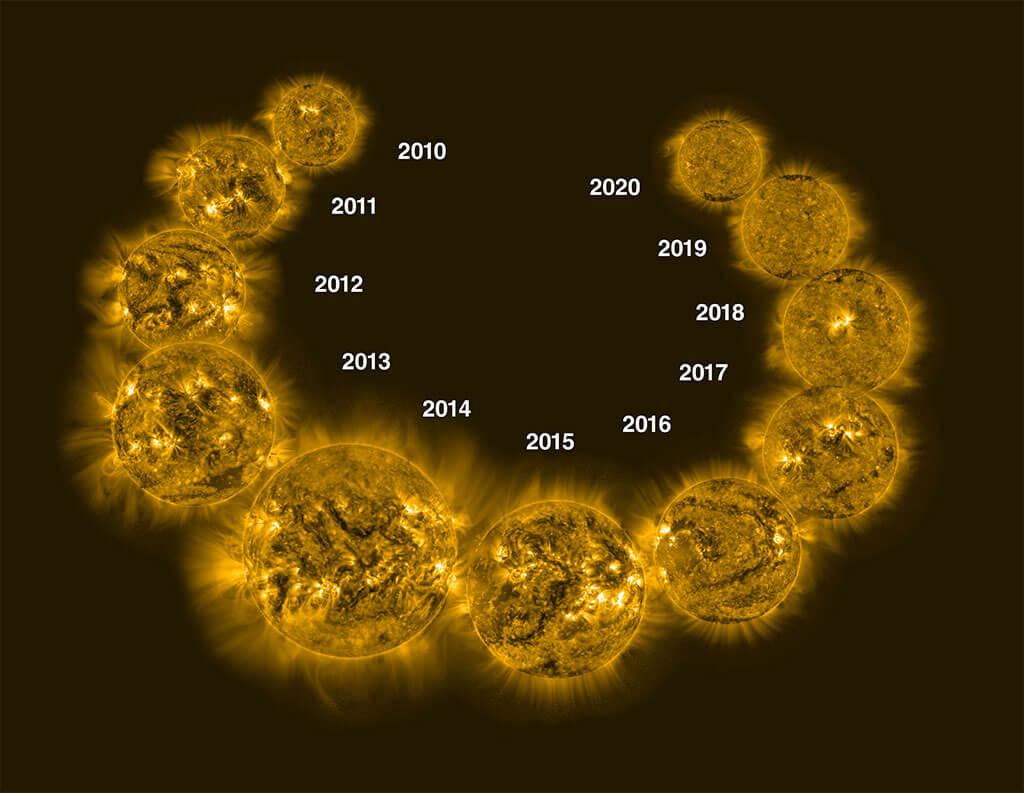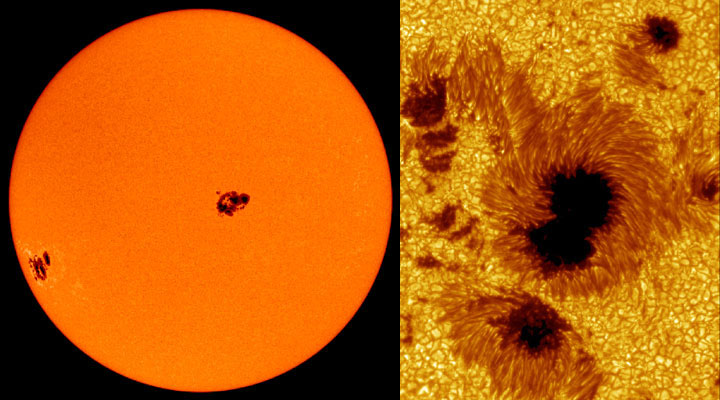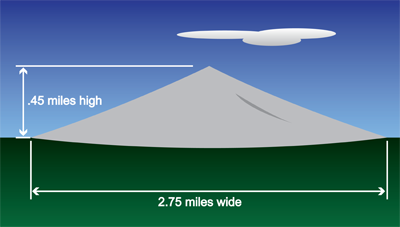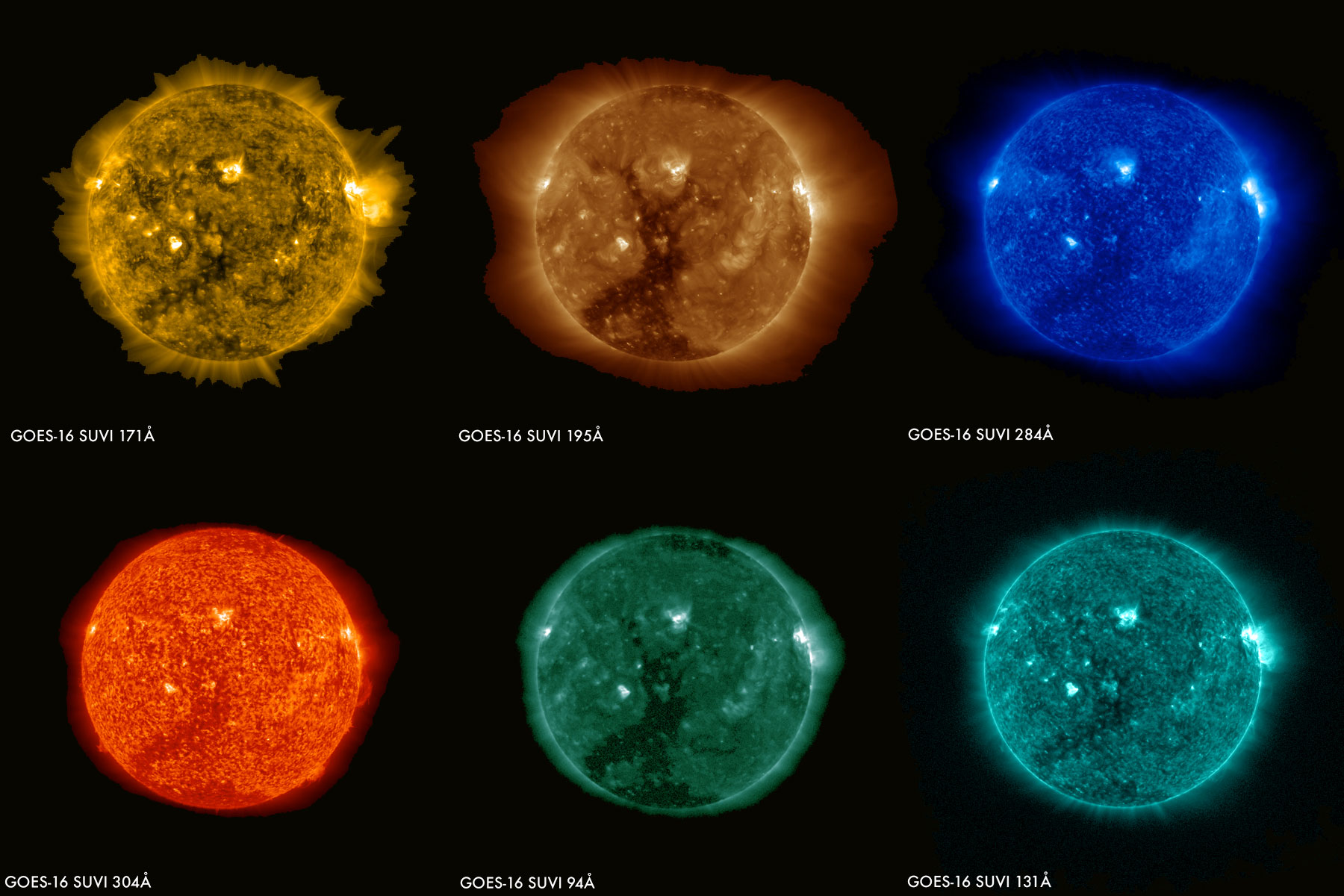What is the solar cycle?
The Sun is the worst place in the solar system when it comes to stormy weather. After all, at its heart, our Sun is a huge nuclear bomb!
The Solar Cycle
Much of the Sun's tempestuous nature comes from its core. At its core is dense, electrically charged gas. Electrically charged gas is a special form of matter called a plasma. This roiling, boiling plasma generates the Sun's powerful magnetic field. Like Earth's magnetic field, the Sun's magnetic field has a north pole and a south pole. On the Sun, however, the magnetic fields are much messier and more disorganized than on Earth.
About every 11 years, the Sun's magnetic field does a flip. In other words, the north pole becomes the south pole, and vice versa.
This flip is one aspect of the roughly 11-year activity cycle the Sun experiences as its magnetic field evolves slowly over time. As the cycle progresses, the Sun's stormy behavior builds to a maximum, and that's when the magnetic field reverses. Then the Sun settles back down to a minimum, only to start another cycle.

Evolution of the Sun in extreme ultraviolet light from 2010 through 2020, as seen from the telescope aboard Europe's PROBA2 spacecraft. Credit: Dan Seaton/European Space Agency (Collage by NOAA/JPL-Caltech)
Sunspots
Sunspots are areas of particularly strong magnetic forces on the Sun's surface. They appear darker than their surroundings because they are cooler. Even so, scientists have discovered that when there are lots of sunspots, the Sun is actually putting out MORE energy than when there are fewer sunspots. During solar maximum, there are the most sunspots, and during solar minimum, the fewest.

Through special filters, sunspots may look like the picture on the left. The sunspot groups are as big as the giant planet Jupiter! On the right is a closeup of some other sunspots. The larger sunspot on the right is bigger than Earth! Credit: SOHO (NASA & ESA) and the Royal Swedish Academy of Sciences
Solar Flares
Solar flares happen because of the constantly moving magnetic fields in the Sun's atmosphere. As the Sun approaches solar maximum (the most active part of its 11-year cycle), its magnetic fields become more and more complex. The magnetic fields loop around, and cross over each other, cutting each other off, and reconnecting.
You have probably seen what happens when you sprinkle iron filings on a bar magnet. The iron filings line up along the magnetic lines of force.
Similarly, the hot plasma on the Sun's surface is at the mercy of the magnetic lines of force. Sometimes the plasma gets disconnected from the magnetic fields when the fields interact with each other. Then particles in the hot, charged plasma can be accelerated to great speed and send powerful radiation into space. This is a solar flare.
The frequency of solar flares coincides with the Sun's 11-year cycle. When the solar cycle is at a minimum, active regions are small and rare and few solar flares are detected. These increase in number as the Sun approaches the maximum part of its cycle.
Coronal Mass Ejections
Sometimes, the Sun throws off huge amounts of matter. These events are called coronal mass ejections, or CMEs. A CME can release up to 20 billion tons of this material. If that material were rock, it would make a mountain roughly 2.75 miles across and almost one-half mile high!

The ejected material can travel a million or more miles per hour (500 km/second). Solar flares and CMEs are the biggest, most violent "explosions" in our solar system, releasing the power of around one billion hydrogen bombs!
Fast CMEs occur more often near the peak of the 11-year solar cycle, and can trigger major disturbances in Earth's magnetosphere. The Sun can eject matter in any direction, so only some of the CMEs will actually encounter Earth.
Lovely Space Weather
When Earth is in the path of a CME, we get "space weather." The one nice effect is Northern Lights and Southern Lights around the magnetic poles. They occur when the charged solar particles follow the Earth's magnetic lines of force right down into the atmosphere at the poles. The particles cause gases in the air to glow and shimmy like colorful, dancing draperies of light.
Bad Space Weather
But space weather can also cause a lot of damage to our technologies. Electrical power systems on the ground can be damaged. Astronauts in the International Space Station can be injured. Jets flying over the poles can expose passengers and crews to significant doses of radiation. Earth-orbiting satellites can be disabled.
To protect our technologies, high-altitude travelers, and astronauts, we need warning when bad space weather is on the way. Thankfully, we have satellites, such as NOAA's Geostationary Operational Environmental Satellites (GOES), that keep an eye on the Sun and warn us of its violent outbursts.

These images of the sun were captured at the same time on January 29, 2017 by the six channels on the SUVI instrument on board GOES-16. Each channel observes the sun at a different wavelength, allowing scientists to detect a wide range of solar phenomena important for space weather forecasting.
Now, play "Shields Up!" Protect Earth's satellites from solar flares and CMEs.




